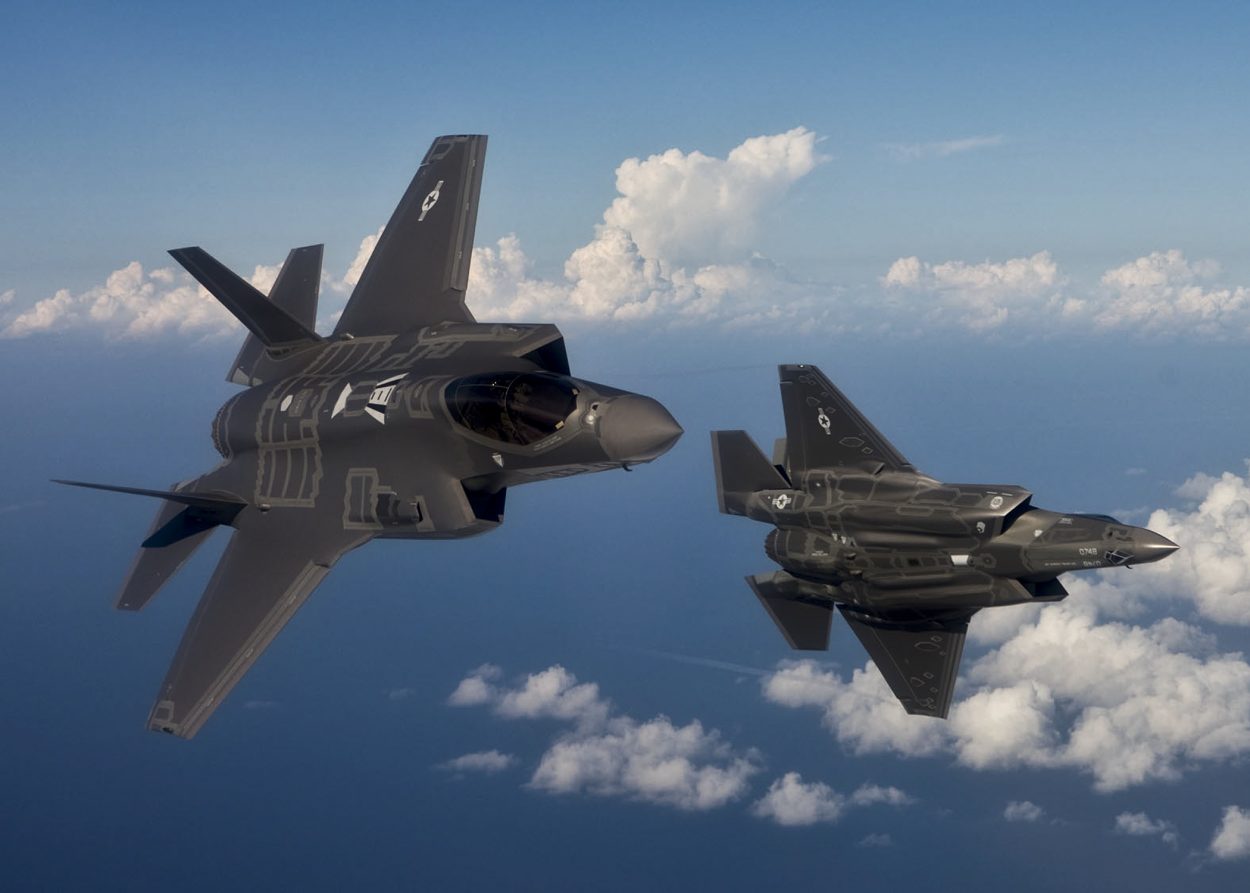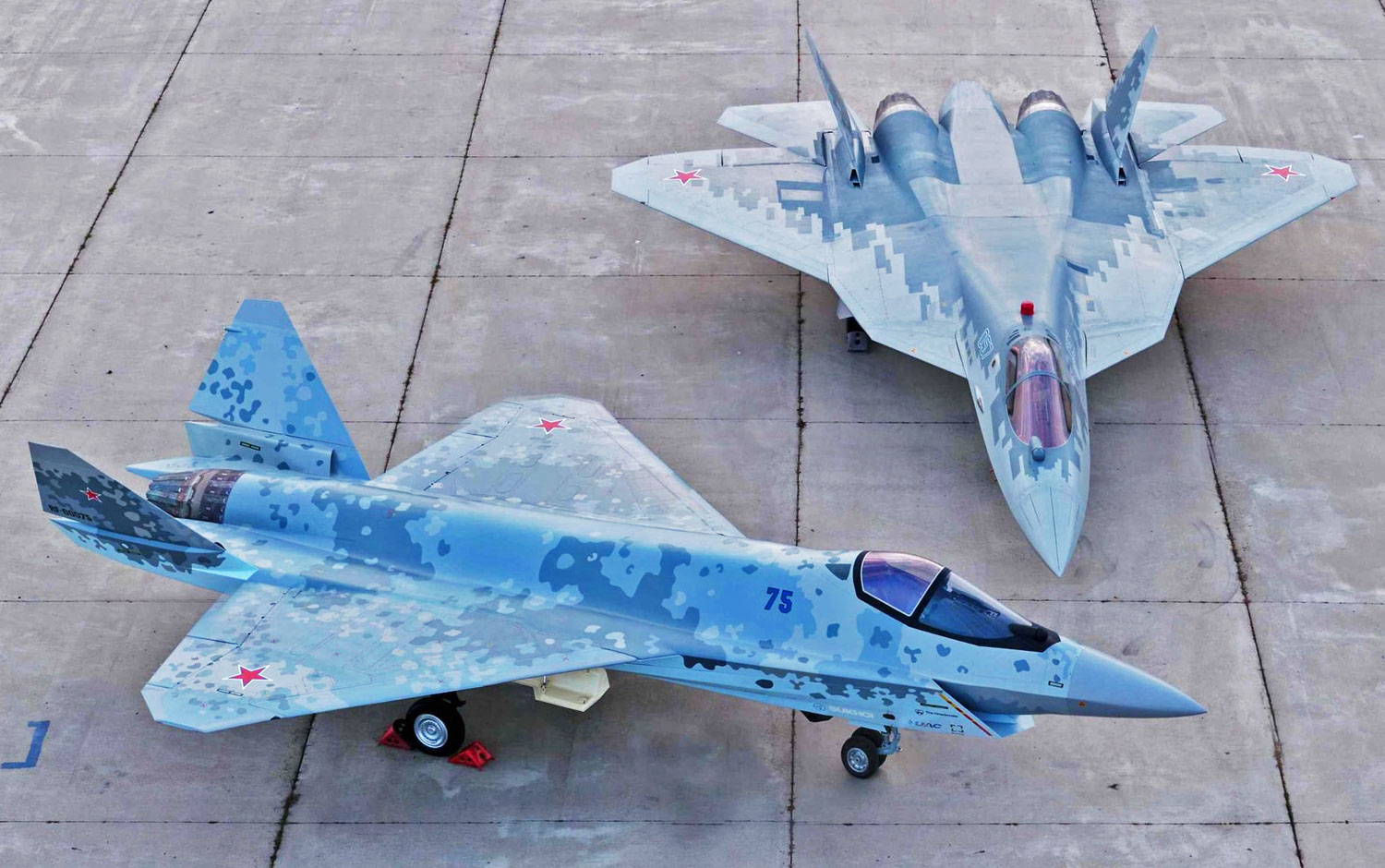As the war in Ukraine progresses, a senior F-35 test pilot for Lockheed Martin roots for the jet’s data gathering and sensor fusion capabilities which he says gives it an unparalleled advantage.
Chasing A UFO! Fighter Jets Scrambled To Hunt A Mysterious ‘Alien Aircraft’ In One Of World’s Most Intriguing Events From The Past
History In Making! Chinese Space Station ‘Tiangong’ Aims To Outdo The ISS & Have The Most ‘Precise Clock’ In Orbit
Billie Flynn, a retired Lieutenant Colonel from the Royal Canadian Air Force (RCAF), gives considerable insight into how it naturally remains relevant despite its naysayers.
Data Gathering ‘Spaceship’
That F-35’s signature data sharing, processing, and sensor fusion technology, according to Flynn, decides the outcome of current and future wars. “It is a data-gathering spaceship, powered by 8.6 million lines of software code,” Flynn said.
As the term Joint Strike Fighter (JSF) went at the beginning of the program, it envisaged the single platform providing stealth, strike, and air dominance roles all at once and gathering and sharing battlespace data and information for joint operations.
Naturally, its capabilities are amplified when operating with other F-35s – usually US allies – exploiting complete information of their, their wingmen, and their enemy movements, allowing the individual pilot to make the most informed tactical decisions.
Russia’s 200 Year-Old ‘Artillery First’ Doctrine That Devastated Ukraine Even Outranges & Outguns US Systems
“It is a data-gathering spaceship with 8.6 million lines of software code,” Flynn asserts, upholding what is believed as the single biggest game-changer that allows the individual pilot to make the most informed tactical decision.
Flynn says this proves how the US has envisioned and been a step ahead of the Chinese, who introduced their ‘intelligentized warfare’ concept. Taking the ‘informationized war’ to a new level, EurAsian Times had talked about Chinese aircraft designers envisioning future airborne early warning roles to be distributed between big and small aircraft.

“We pioneered it long before China, and they can’t catch up. By the time they do, we will have advanced a decade ahead of them,” he said. And it’s not even stealth, but “sensor fusion” that Flynn reiterates is the heart of the F-35.
“It is the capability to mesh all the data and sensors to give the pilot a simplified, prioritized display of knowledge of the battlespace. No data or information but knowledge of what is out there in the battlespace,” Flynn said. The emphasis on the term implies a distinct, discernible picture of the battlefield they do not have to sit and analyze.
The data linking and sharing are also markedly different and diverse than the Link 16 systems on some of the leading four and 4.5-generation fighters.
Link 16 merely transmits positional, fuel, and weapons payload data other fighters are carrying and some communication information, in an omnidirectional fashion, spreading everywhere, with the signal likely intercepting.
But the F-35’s Multifunction Advanced Data Link (MADL) rapidly transmits packets of data back and forth, making it extraordinarily difficult to intercept.
And therefore, it is used with other F-35s that this absolute data sharing and situational awareness capability can be exploited since it’s technically challenging to integrate such systems with older 4th generation planes.
Neither is the F-35 a strike platform, as Flynn points to its air-to-air payload of six Advanced Medium Range Air to Air Missile (AMRAAM) in the internal weapons bay, along with AIM-9 or ASRAAM IR missiles on the outward wing stations.
The F-35 has seen its share of criticisms. The frustration with the plane boiled over in US Air Force Chief General Charles CQ Brown’s February 22, 2021 comment. “(It’s like having) to drive your Ferrari to work daily.”
‘Category 1’ problems have been reported with engines, cockpit regulation systems; night vision cameras; the Northrop Grumman AN/APG -81 Active Electronically Scanned Array (AESA) radar, and; an inaccurate 25 mm gun by the Joint Programme Office (JPO).
The US’s Government Accountability Office (GAO) has raised a series of issues: a poor Full Mission Capable (FMC) availability status.
Excellent Dogfighter
Flynn’s aerobatics at the 2017 Paris Air Show also overturned criticisms about the F-35’s kinematic performance, which until then had been criticized for being less maneuverable in a dogfight.
And while he doesn’t dismiss the likelihood of Within Visual Range (WVR) combat in the age of long-range Beyond Visual Range (BVR) missilery, he says the F-35’s low observability/stealth and long radar and sensors help it break the ‘attrition’ “cat-and-mouse” game.
Here, when both planes can see each other, the one emerging triumphant is the one who reaches the enemy’s eyes first, flies highest, fastest, shoots your missile the longest, and gets out of there the earliest.
But this also entails being seen by the enemy who might have fired their missile. “The F-35’s low observability/stealth reduces the possibility of being seen by the enemy, allowing the pilot to shoot first, turn around and speed away,” Flynn explains.
Flynn also hypothesized a possible face-off between an F-35 and Russia’s Su-57 Felon. “We dissected 4th generation Russian fighters like the MiG-29, pitted them against F-16s or F-18s, and found them robust and powerful aircraft.

But their sensors were inferior, making them dramatically less reliable than western fighters. The war in Ukraine has shown that Russian fighters like the Su-35 are incapable. A Su-57 doesn’t stand a chance against an F-35.”
F-35 Current & Future Users
The F-35 Lightning II is fully operational with the United States, Israel, Royal (British) Air Force, Netherlands, and Norwegian air forces, while Canada, Italy, Germany, Japan, and Finland are on their way to receiving it.
Canada has announced the arrival of the first nine fully operational F-35s by 2025 as a part of its 88-jet fleet. Italy has already taken deliveries of 16 of the 60 F-35As it plans to acquire while also considering buying 30 F-35Bs, equally divided between the Air Force and Navy.
Germany’s Luftwaffe is slated to receive more than 35 F-35As to meet as per its announcement on March 14 this year, apparently after initially discounting the fighter – a reversal spurred by the Russian military intervention in Ukraine. Both Germany and Italy aim to replace their aging Panavia Tornado fleets with the F-35As.
As for Japan, its government announced purchasing 105 F-35s in late 2020 for the Japanese Air Self-Defense Force (JASD). It already hosts the US Marine Corps (USMC) Fighter-Attack Squadron 242 in Iwakuni.
Finland has also announced it is basing the planned F-35 squadron at the Lapland Air Force Base in Rovaniemi by 2026 after approving the purchase of 64 units in December 2021. The jets are expected to reach by 2026 and be fully operational by 2030.
- The author can be reached at satamp@gmail.com
- Follow EurAsian Times on Google News




